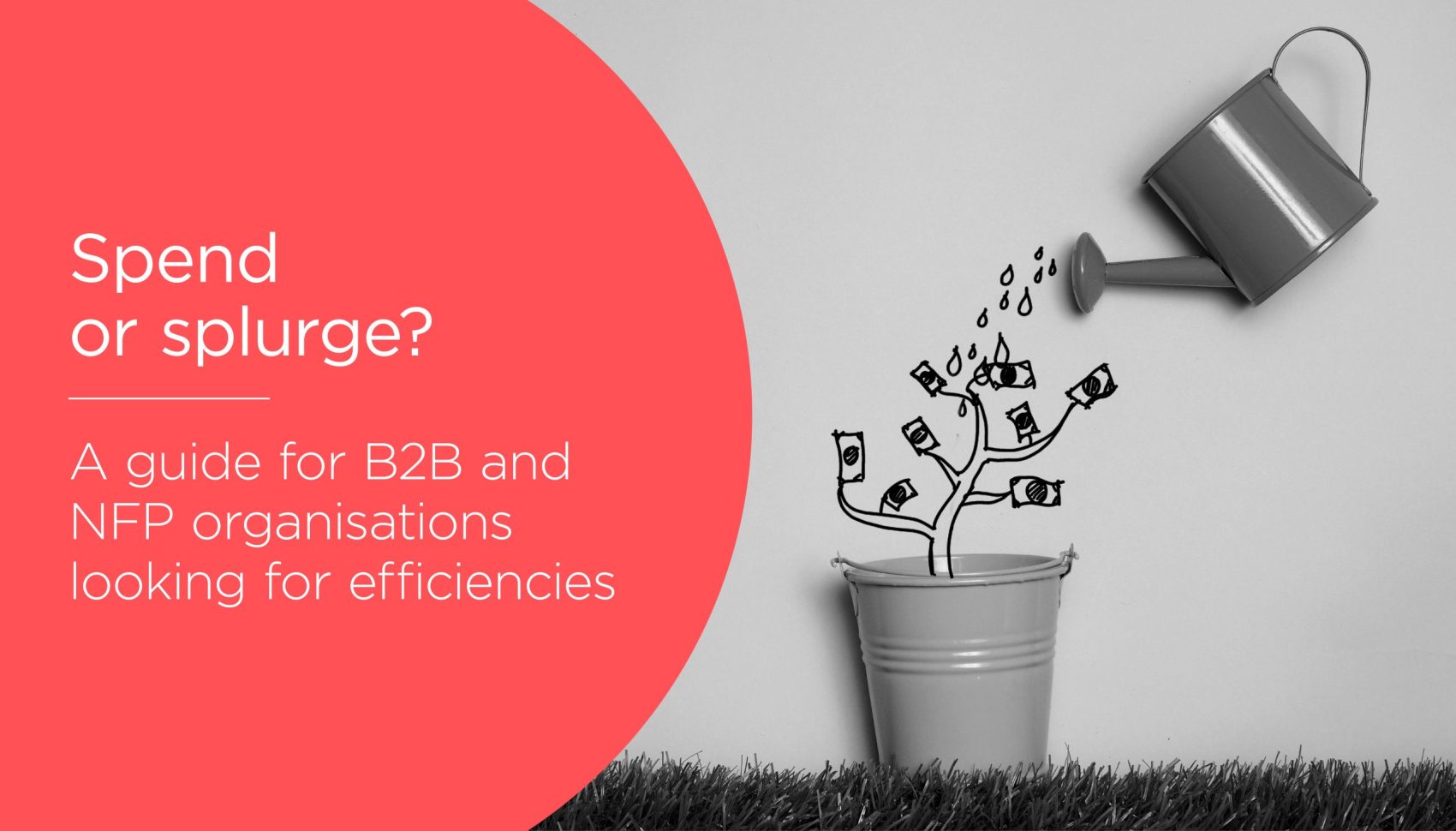We’ve all been there…
We’ve all, at one point or another, been in a situation where we were up against a deadline, had a task to execute, and straddled the fine line between investing our time and efforts to do it right, or prioritising efficiency just to get the job done.
Business-to-business (B2B) and non-for-profit (NFP) organisations often find themselves in the same boat. They both are constantly trying to find the perfect balance between efficiency and spending.
While reducing costs and making a profit are top priorities, it is equally important to invest in certain areas to maximise productivity and improve operational effectiveness.
The Differences and Similarities of B2Bs and NFPs
B2B and NFP organisations are different from one another, but both have to walk the tightrope of efficiency while balancing spending.
B2B companies sell products or services to other companies or organisations, while NFPs operate without the intention of making a profit.
Although they have different goals, both look for efficiency strategies that can help them reduce costs and grow.
Here are a few tips to get you started on how to build a solid efficiency strategy.
Focus on Efficiency
Efficiency is crucial for any organisation seeking to stay competitive in today’s market. Some ways to improve efficiency include automating processes and outsourcing non-core functions.
Automation can help streamline repetitive tasks, while outsourcing non-core functions can help B2Bs and NFPs focus on their core functions and execute them with focus and dedication.
It is also important to regularly review your processes and tools and make sure they are up to date.
Ask yourself: Are we doing things because we’ve always done them? Is there a way to do it better?
Always make sure that your processes are growing with you!
Investing in People
Investing in people can make or break an organisation's rise to success.
Building talent is essential in nurturing a strong and innovative workforce. Instead of always hiring senior staff, consider investing in junior talents within your organisation.
Not only is this more efficient, but juniors will also provide you with fresh perspectives and new ideas.
Another way to put people first is to improve employee experience. Happy employees will generally perform better and bring a positive attitude to work.
According to a Gallup study, employees who feel engaged with their work are 21% more productive than their disengaged counterparts.
Customer Retention Strategies
Customer retention is the secret sauce in increasing revenue for B2Bs and NFPs.
Essentially, retaining customers is much cheaper than acquiring new ones and loyal customers are more likely to refer new clients.
Prioritising customer service, offering value-added services, and utilising feedback are just some way to boost your retention strategy.
By listening to your customers and evaluating their level of satisfaction, you’ll build stronger relationships and maximise your ROI. All this to avoid having your customers belt out the Rolling Stone’s classic in the shower…
Marketing and Branding
Building brand awareness is critical for both B2Bs and NFPs. Why, you might ask?
A strong brand can help build credibility, a good reputation and trust amongst stakeholders and reach their target audience.
But you can’t build a strong brand without a strong brand strategy. A strategy will help you assess how to align your company’s values with your brand and create a blueprint of forward steps to take.
Marketing can also help increase brand visibility. You must, however, be strategic about allocating your marketing budget so that you don’t spend unnecessarily and ultimately increase your ROI and market share.
Financial Management
Financial management and oversight is a crucial part of any organisation’s operations.
Accurate budgeting and forecasting are just two of the many components of successful financial management. Organisations must constantly track their spending and revenue to accurately assess their financial performance.
Moreso, managing cash flow helps B2Bs and NFPs ensure they have enough resources to achieve their objectives and meet their KPIs.
Balancing Efficiency and Spending
Balancing efficiency and spending is all about achieving your objectives without compromising your bottom line.
Assessing your return on investment (ROI) and identifying opportunities for improvement are ways to strike that fine balance.
Good oversight will help you invest in the right areas and eliminate unnecessary expenses. Ultimately, all organisations must find ways to deliver high-quality products or services without overextending themselves or compromising their mission and values.
Final Thoughts
Finding the perfect balance between spending and efficiency is a challenge faced by many B2B and NFP organisations.
By focusing on efficiency, investing in people, retaining customers, building brand awareness and practising good financial management, organisations can start making the right investments and manage their resources properly.
It won’t always be an easy equilibrium, but efficient strategies will help you stay competitive and relevant in a fast-paced business environment.
To find out more, book a free 30 minute call with MIH today!

